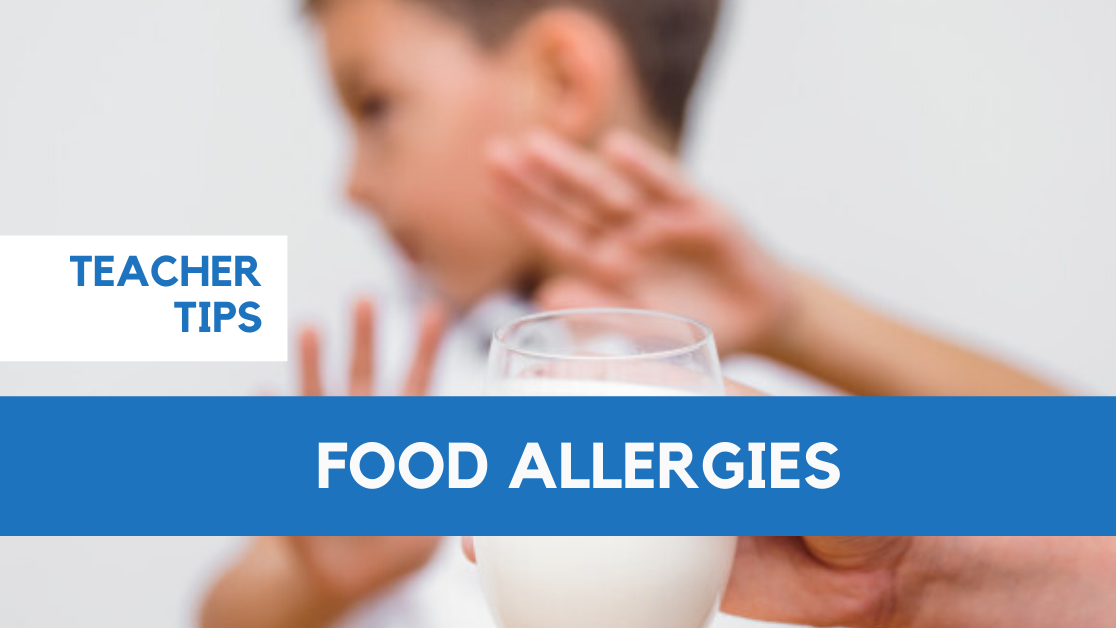With the new year, comes the excitement of a class full of new learners…with their own set of new personalities, but for teachers of children with food allergies, the excitement is quickly replaced with nervousness. Teachers play a vital role in keeping children with food allergies safe at school.
There are many sources of allergens that can cause an allergic reaction – but one of the most common allergens is food. So, whether you are at a school that provides learners with food or at a school where parents pack lunchboxes, children are constantly being exposed to allergens. Some parents might be aware of allergies their child might have and disclose this to you as teacher, but other allergies might be discovered for the first time at school (especially when working with young children.).
According to the Centres for Disease Control and Prevention, food allergies are estimated to affect 4 – 6 percent of children. The most common foods that cause 90% of allergic reactions are milk, tree nuts, peanuts, soy, shellfish, fish, wheat and eggs with milk, peanuts and eggs being the most common among children. Once the allergen is consumed it usually causes a reaction within minutes up to two hours.
Allergic reactions to food most often involve the skin, the gastrointestinal tract, the cardiovascular system and the respiratory tract. Symptoms can range from an uncomfortable reaction to life threatening. According to the American College of Allergy, Asthma and Immunology, allergic reactions to food may surface in the following ways:
- Vomiting
- Diarrhoea and/or stomach cramps
- Hives, Eczema or red spots
- Shortness of breath, difficulty breathing and/or wheezing
- Repetitive cough
- Shock or circulatory collapse
- Itching or tightness in throat, hoarse throat, trouble swallowing,
- Swelling or itching of tongue, lips, mouth or eyes
- Sneezing, runny or stuffy nose
- Weak pulse and/or lowered blood pressure
- Pale or blue colouring of skin
- Dizziness or feeling faint
- Anaphylaxis – life threatening
There is unfortunately no medication to prevent food allergies. The goal of treatment is to avoid the foods to which the child is allergic to – like the Edward Coke quote, “Precaution is better than cure!”
Anaphylaxis:
Anaphylaxis is the most serious reaction to allergens there is. This reaction is life-threatening, causing a whole-body allergic reaction that can impair your breathing, cause a dramatic drop in your blood pleasure and effect your heart rate. Anaphylaxis requires immediate medical treatment. If not treated properly, anaphylaxis can be fatal. Some health care providers may prescribe an emergency kit that contains epinephrine, which helps stop the symptoms of severe reactions.
Prevention:
Most children who suffer from food allergies attend school happy and safely every day. The key to success is to form a partnership with clear communication between the parents, the child and the school.
- Teachers must be aware of the child’s allergies and know what triggers the child needs to avoid at school.
- Teachers need to be familiar with signs of an allergic reaction.
- Teachers should raise awareness of food allergies among learners in the class.
- Teachers should have name lists of learners with allergies, visible in their classroom.
- Teachers can create the “no-sharing” rule.
- Teachers can ask parents for “safe snacks” for unplanned events.
- Teachers should make sure children wash their hands on a regular basis.
- Schools with cafeterias can post the menu in advance to allow parents to identify potentially unsafe meals.
- Pictures of the children with food allergies can be placed behind the counter in the cafeteria.
- Special seating arrangements can be made in the cafeteria to minimize exposure.
- Children that are old enough should know their allergies, learn how to recognise the symptoms of a reaction and if an issue occurs, tell an adult immediately.
- In severe cases teachers should discuss an emergency action plan with parents and have the necessary medication authorisation forms completed.
- Epinephrine injectors should be clearly marked with the child’s name and these should be checked on a regular basis that they have not expired during the school year.
- Learners with severe allergies should wear medical identification jewellery.
Let’s strive to live by the wise words of Charles M. Hayes – Safety first is safety always.
READ THIS ARTICLE AND MORE IN THE LATEST EDITION OF THE TEACHA! MAGAZINE. READ OR DOWNLOAD IT HERE.



